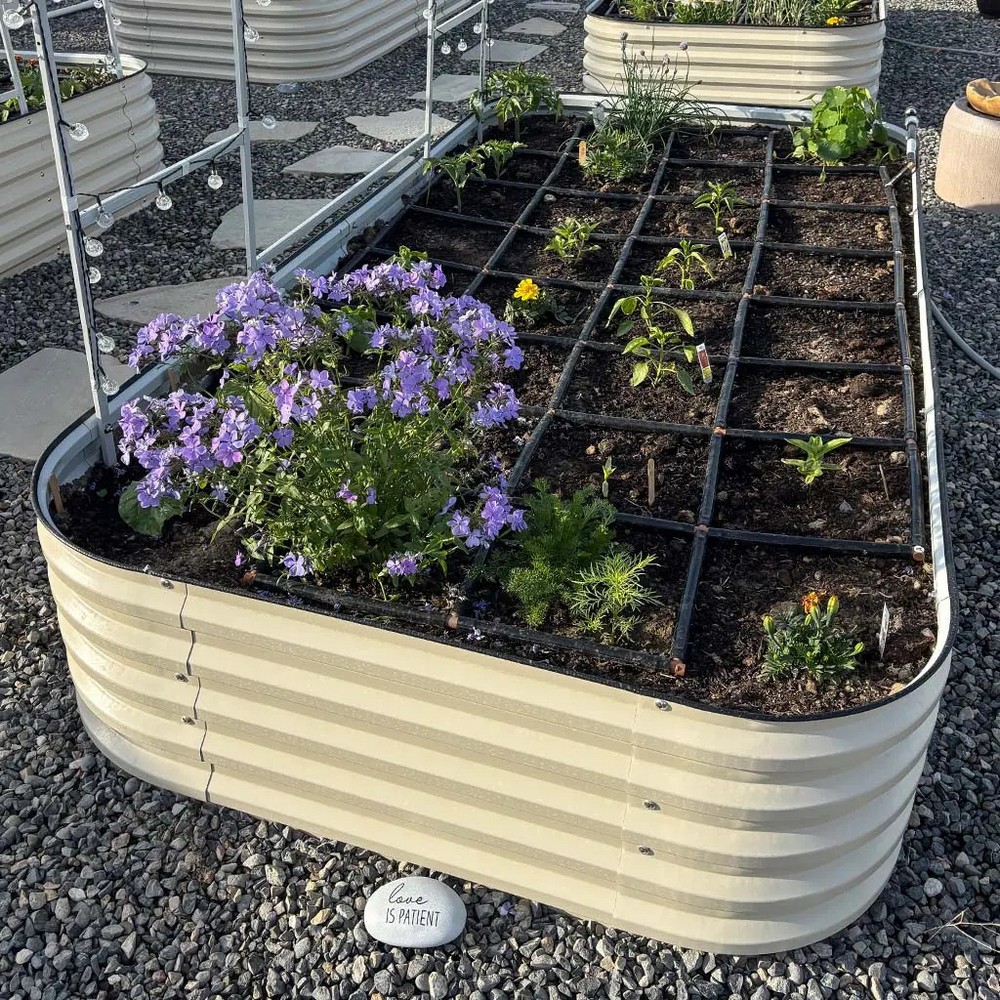
Raised garden beds are a sanctuary for plants, offering controlled soil conditions and easier access for gardeners. But to wildlife, they often resemble an all-you-can-eat buffet. From rabbits nibbling tender greens to squirrels digging up bulbs, animals can undo weeks of hard work in minutes. While there’s no one-size-fits-all solution, a thoughtful combination of prevention, adaptation, and coexistence can protect your garden without harming local ecosystems. Here’s how to strike that balance.
Understand Your Visitors
Before deploying defenses, identify the culprits. Common garden invaders include:
- Small mammals: Rabbits, groundhogs, and voles (they burrow and chew roots).
- Birds: Sparrows, pigeons, or crows (seed stealers and fruit peckers).
- Climbers: Squirrels, raccoons, and even deer (depending on your region).
Each species requires tailored strategies. For example, deer jump fences, while rabbits squeeze through gaps. Observing tracks, droppings, or bite patterns can help pinpoint the problem.
Build Physical Barriers
The most reliable method is to block access entirely. Raised beds already elevate plants, but adding barriers adds another layer of protection:
Fencing:
- Use 1/4-inch hardware cloth (not chicken wire, which rabbits can chew through).
- Bury the fence 6–12 inches underground to deter diggers like voles.
- For deer, install a 6–8 ft tall fence angled outward—they’re less likely to jump if unsure of landing.
Cloche or Row Covers:
Lightweight fabric or mesh covers protect seedlings while allowing sunlight and rain. Anchor edges with rocks or stakes.
Tree Guard Collars:
- Wrap metal or plastic guards around young tree trunks to prevent bark chewing by rodents.
- Physical barriers require upfront effort but offer long-term peace of mind.
Leverage Natural Deterrents
If fencing feels too industrial, work with nature’s own defenses:
Plant Strategically:
- Intersperse aromatic herbs (rosemary, lavender, mint) or spiky plants (barberry, globe thistle) among vegetables.
- Border beds with marigolds or alliums—their strong scents repel rabbits and deer.
Homemade Repellents:
- Spicy Spray: Blend 2 cups water, 1 tbsp cayenne pepper, and a minced garlic clove. Strain and spray foliage (reapply after rain).
- Predator Scents: Sprinkle dog hair or commercially available coyote urine granules around beds (works for raccoons and deer).
Motion-Activated Devices:
- Solar-powered ultrasonic repellents or sprinklers startle animals with noise or water bursts. These work well for nocturnal visitors like raccoons.
- Natural methods require consistency but align with organic gardening principles.
Modify the Habitat
Animals gravitate toward food, water, and shelter. Remove these incentives:
- Clear Debris: Piles of leaves or wood create hiding spots for rodents.
- Secure Compost: Use animal-proof bins with locked lids.
- Avoid Attractive Crops: If deer are a recurring issue, skip planting their favorites (hostas, tulips, beans) near beds.
For persistent diggers like squirrels, lay wire mesh under the soil before planting. They’ll abandon beds once they hit resistance.
Embrace Companion Planting
Some plants act as “bodyguards” for others:
- Nasturtiums lure aphids away from veggies.
- Sunflowers distract birds from berry bushes.
- Dill and fennel attract predatory wasps that control caterpillars.
This approach won’t eliminate pests but reduces their impact through ecological balance.
When All Else Fails: Coexist
If animals still breach defenses, consider sharing a portion of your harvest:
- Plant extra greens in a sacrificial bed away from main crops.
- Install a bird feeder to divert attention from berries.
This pragmatic compromise minimizes frustration while supporting local wildlife.
Try Raised Bed Covers for Versatile Protection

A raised bed cover is one of the most adaptable and effective solutions to keep animals out while still maintaining plant health. Whether you’re protecting young seedlings from birds or shielding ripening vegetables from squirrels, using a cover can offer season-round support.
Types of Covers to Consider:
- Mesh Covers: Lightweight and breathable, mesh covers keep out birds, rabbits, and squirrels while allowing sun and rain to penetrate. They’re ideal for summer crops.
- Floating Row Covers: Made of fabric, these offer protection from both pests and chilly temperatures. They’re useful in early spring or fall when young plants need warmth.
- Polycarbonate or PVC Cold Frames: These rigid structures double as mini greenhouses. They deter larger animals like raccoons or deer and extend the growing season in cooler climates.
- Hoop Tunnels with Netting: A flexible and DIY-friendly solution. Build hoops from PVC or metal rods and drape netting or garden fabric over the frame. Anchor the edges with soil, bricks, or landscape staples to prevent entry from underneath.
Benefits of Raised Bed Covers:
- Multi-Season Use: You can swap out materials seasonally—netting in summer, fabric in fall, or clear plastic in winter.
- Reduces the Need for Repellents: Once covered, plants are less exposed to browsing, so you can rely less on sprays or scent-based deterrents.
- Supports Seedling Growth: Covers prevent sudden damage during vulnerable growth stages, giving young plants a stronger start.
Raised bed covers are especially useful in urban or suburban environments where fencing may not be practical. They strike a perfect balance between visibility, protection, and ease of access—just lift the cover when it’s time to harvest or weed. Over time, you’ll find them an invaluable part of your animal-proofing toolkit.
Final Thoughts
Protecting raised beds from animals isn’t about declaring war—it’s about smart design and adaptability. Start with physical barriers for high-value crops, use natural deterrents to discourage casual visitors, and accept that occasional losses are part of gardening’s ebb and flow. Over time, you’ll learn which strategies work best for your garden’s unique ecosystem.
Remember: A few nibbled leaves don’t spell failure. They’re proof that your garden is vibrant enough to attract life in all its forms. Tend to your plants, adjust your tactics, and take pride in cultivating a space that thrives in harmony with nature.
Pro Tip: Observe animal behavior at dawn or dusk. Understanding their habits will help you refine your strategies season after season.
Now, grab a cup of coffee, watch the sunrise over your raised garden beds, and enjoy the quiet satisfaction of a garden that’s both productive and wild at heart.









